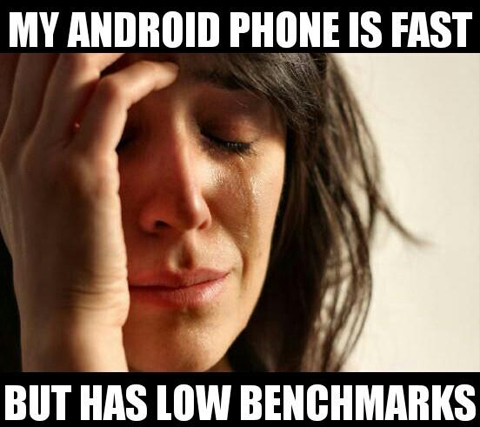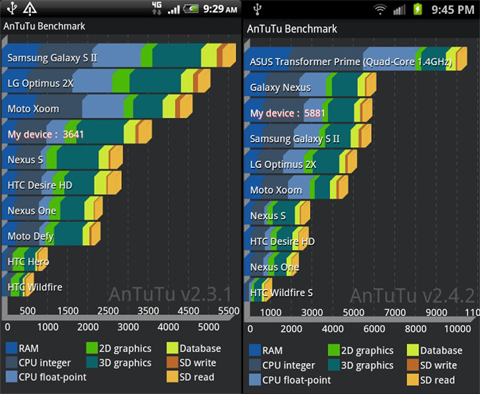Announced just last month, the O+ Ultra 2.0 already landed in our hands and we’re ready to give you our thoughts on it. Join us in this quick review of this smartphone.
Design and Construction

The Ultra 2.0 touts a 5.5-inch display that’s fitted with an HD display at 1280 x 720 resolution. This puts it at 267 ppi which is still pretty decent despite its spacious screen.

Inspecting the upper part of its face, we see the 2-megapixel front camera accompanied by a single LED flash on the other side for lighting up those selfies.

While at the bottom, we see the use of capacitive buttons for Multi-window, Home, and Back.

Although the Ultra 2.0 just carries a plastic back cover, the company still made sure that it won’t look cheap. The backplate is designed in a way that it still looks presentable, even gunning for a metal appearance.

Squeezed in the upper leftmost corner is its main 8-megapixel shooter that’s also supported by a single LED flash. Although not too obvious, the sensor is somewhat protruding and not seamlessly blended with its environment.

The speaker grille comes in the form of a pinhole design below their signature branding.

Here, we see the rounded corners of the device which makes it easy to hold. The overall design involves the main body, a single chrome accent surrounding the device, and the display that acts as the third and final layer comprising the handset.

Up top, we have the 3.5mm audio jack as well as the microUSB port for charging the device and transferring files.

The right side is where all the physical buttons are lined up. Here we have the power/lock button, volume rocker, and the dual-SIM slot that’s accessible using a poke pin.

On the other side, the storage expansion compartment sits alone and also works the same way you access the SIM tray.
What we noticed regarding its form factor is that it’s a bit on the heavy side. The company didn’t disclose the weight of the handset but once you have it on your hands you’ll feel that there’s an extra heft to it and its 4000mAh battery pack is most likely the culprit.
OS, UI, and Apps

Running on Android 5.1, the Ultra 2.0 has the usual app tray and a few bloatwares. From its 16GB storage, users are left with about 12.40GB since the operating system took more than 3GB of space.
Navigating thru its UI was a smooth-sailing affair and we rarely noticed lags. Same was the case when jumping from app to app, and even when opening multiple tasks simultaneously.
Camera

Carrying an 8-megapixel rear shooter, we went around the Metro taking shots and testing how it would reproduce images. Check out the sample shots below:









Performance and Benchmarks

The Ultra 2.0 packs a rather modest set of specs including a 1.3GHz quad-core processor, 2GB of RAM, and 16GB worth of space for storing your media files.
Upon using it on a daily basis, we had no problems with the phone as a secondary unit for checking our social media sites. We also tried doing some light gaming on it and the handset handled them well. It is when we began switching between all those that the Ultra 2.0 showed some minor lags. It was pretty understandable, though, as we kind of exhausted the device doing so.
For those that are heavy on storing movies or games on their handsets, you’d be glad to know that the company is throwing in a 32GB microSD card free in every bundle of Ultra 2.0 — that’s 32GB more on top of the existing 16GB.

We also ran our standard benchmarking tools and here are the results:
- AnTuTu – 19,302
- Quadrant Standard – 5,817
- Vellamo – 1,126 (Multicore), 889 (Metal), 1,773 (Browser)
- 3DMark Ice Storm Extreme – 1,898
- PCMark – 2,857
Battery Life

As mentioned earlier, the phone is a bit heavy and this is most likely due to its beefy 4000mAh battery. It didn’t disappoint, though, as it lasted 9 hours and 48 minutes after running PCMark battery test.
The combination of its battery capacity, a decent quad-core CPU running on a fairly low clocking, and its non-Full HD display all contributed in achieving this longer-than-average battery life.
Conclusion

The device is priced at Php6,895 and although it doesn’t have the best specifications available, it still handled tasks well and we actually haven’t encountered anything disappointing. If we were to nitpick, we’re not totally fans of its 8MP main camera due to the digital noise that’s easily seen, more so at night.
With the O+ Ultra 2.0, you get a battery performance that could last for more than 9 hours straight, a design that doesn’t look cheap, and a camera that shoots acceptable images.
O+ Ultra 2.0 specs:
5.5 HD IPS screen @ 1280×720, 267ppi
1.3GHz Quad Core Processor
2GB RAM
16GB internal storage
expandable via microSD
8MP AF rear camera with Flash
2MP Front Camera
Dual-SIM, Dual Standby
3G HSPA+
WiFi
Bluetooth
GPS
Android 5.1 Lollipop
4000mAh battery
What we liked about it:
- Presentable design
- Front flash for selfies
- Longer than average battery life
- All around decent performer
What we didn’t like:
- Camera not for low light shooting
The post O+ Ultra 2.0 Quick Review appeared first on YugaTech | Philippines News & Tech Reviews.




